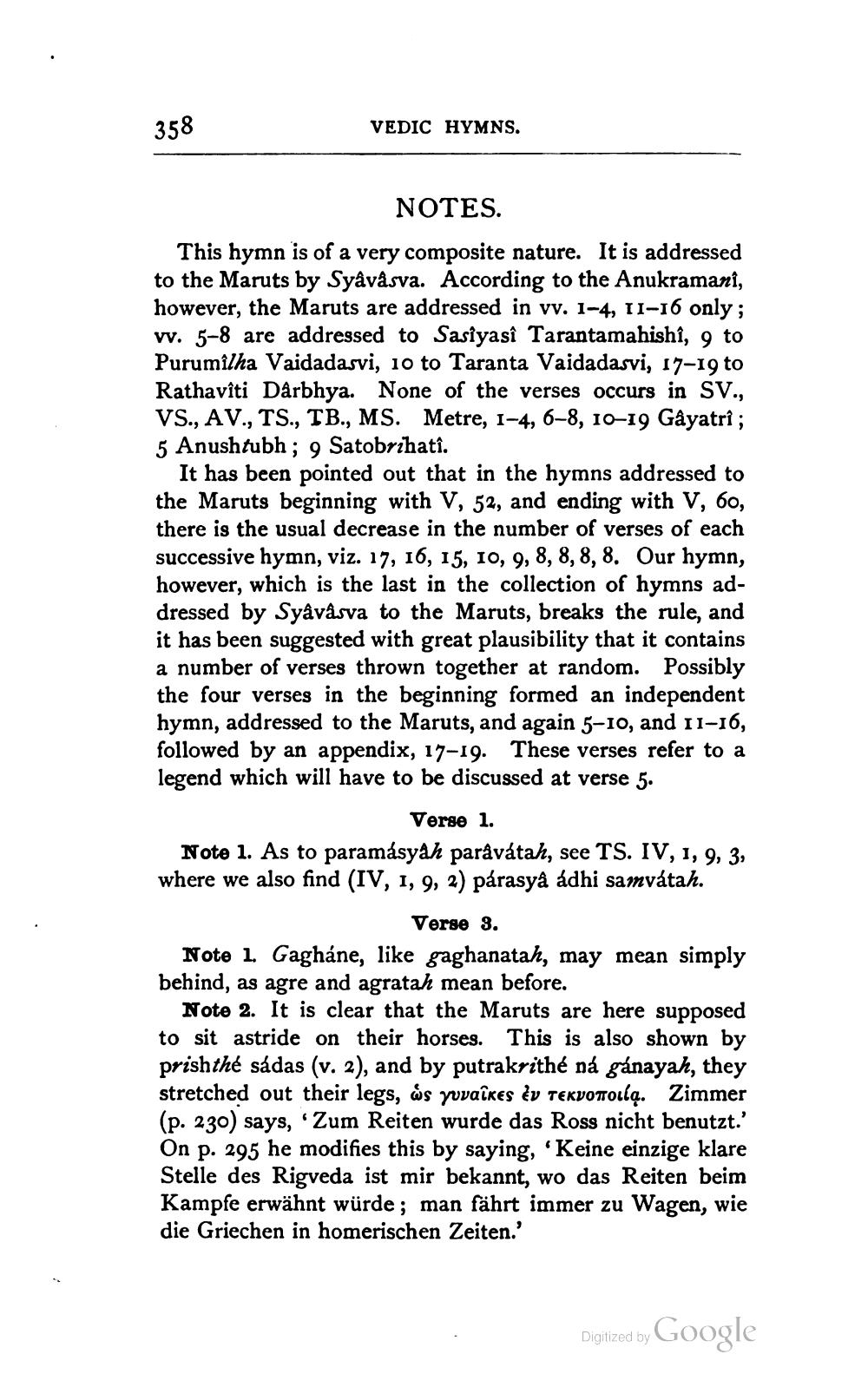________________
358
VEDIC HYMNS.
NOTES. This hymn is of a very composite nature. It is addressed to the Maruts by Syâvâsva. According to the Anukramani, however, the Maruts are addressed in vv. 1-4, 11-16 only; w. 5-8 are addressed to Sasiyasî Tarantamahishỉ, 9 to Purumilha Vaidadasvi, 10 to Taranta Vaidadasvi, 17-19 to Rathaviti Darbhya. None of the verses occurs in SV., VS., AV., TS., TB., MS. Metre, 1-4, 6-8, 10-19 Gayatri ; 5 Anushtubh ; 9 Satobrihati.
It has been pointed out that in the hymns addressed to the Maruts beginning with V, 52, and ending with V, 60, there is the usual decrease in the number of verses of each successive hymn, viz. 17, 16, 15, 10, 9, 8, 8, 8, 8. Our hymn, however, which is the last in the collection of hymns addressed by Syâvâsva to the Maruts, breaks the rule, and it has been suggested with great plausibility that it contains a number of verses thrown together at random. Possibly the four verses in the beginning formed an independent hymn, addressed to the Maruts, and again 5-10, and 11-16, followed by an appendix, 17-19. These verses refer to a legend which will have to be discussed at verse 5.
Verse 1. Note 1. As to paramásyah paravátah, see TS. IV, 1, 9, 3, where we also find (IV, 1, 9, 2) párasyå adhi samvátah.
Verse 3. Note 1. Gagháne, like gaghanatah, may mean simply behind, as agre and agratah mean before.
Note 2. It is clear that the Maruts are here supposed to sit astride on their horses. This is also shown by prishthé sádas (v. 2), and by putrakrithé ná gánayah, they stretched out their legs, ás povaĉkes ¿v TEKVOTOLlą. Zimmer (p. 230) says, 'Zum Reiten wurde das Ross nicht benutzt.' On p. 295 he modifies this by saying, 'Keine einzige klare Stelle des Rigveda ist mir bekannt, wo das Reiten beim Kampfe erwähnt würde; man fährt immer zu Wagen, wie die Griechen in homerischen Zeiten.'
Digitized by
Digilzed by Google




